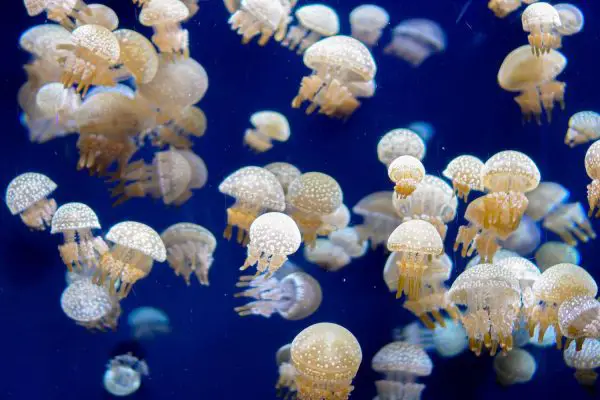Porpoises, those playful denizens of the deep with their clicking calls and acrobatic leaps, have captivated the human imagination for centuries. Beyond their endearing appearance and playful antics, these remarkable cetaceans exhibit complex social behaviors and play a vital role in the marine ecosystem. By delving into the diverse collective nouns used to describe groups of porpoises, we embark on a journey exploring their social dynamics, ecological significance, and the challenges they face in our changing oceans.
Collective Nouns for Porpoises
While “pod” reigns supreme as the most common term for a group of porpoises, signifying their cohesive movement and shared journey, other terms paint a more nuanced picture depending on the context:
- Pod: This term evokes a sense of intimacy, shared purpose, and close companionship. It signifies a small group of porpoises, usually between two and twelve, traveling together. The image it creates is one of a group of porpoises swimming in close proximity, often engaged in playful interactions or synchronized movements, highlighting their strong social bonds and cooperative spirit.
Example: As the first rays of dawn painted the horizon with hues of orange and pink, a pod of porpoises sliced through the calm water. Their playful splashes and synchronized leaps showcased their close bonds and enjoyment of each other’s company.
- Herd: This term, typically used for land mammals, can also apply to larger groups of porpoises, often exceeding twelve individuals, traveling together. The image it creates is one of a larger group of porpoises moving in a more loosely organized manner, often in search of food or migrating to warmer waters, highlighting their collective movement and shared goals.
Example: Driven by the instinct to find abundant food sources, a herd of porpoises surged through the vast ocean depths. Their collective movement showcased their reliance on each other and their ability to navigate vast distances together.
- School: This term, often associated with schooling fish, can also be used to describe a group of porpoises swimming together in a coordinated and synchronized manner. The image it creates is one of a group of porpoises moving in unison, their bodies seemingly connected by an invisible force, highlighting their remarkable communication and coordinated movements.
Example: As the sun dipped below the horizon, a school of porpoises danced across the water’s surface, their bodies flashing silver in the fading light. Their synchronized movements showcased their ability to communicate and move as a cohesive unit.
- Raft: This term, with its connotations of rest and relaxation, signifies a group of porpoises gathered together on the surface of the water, often for socializing or resting. The image it creates is one of a group of porpoises floating near the water’s surface, engaging in playful interactions or simply basking in the sun, highlighting their social interactions and moments of respite.
Example: In the calm afternoon sun, a raft of porpoises gathered near the surface, their gentle clicks and whistles filling the air. Their relaxed postures and playful interactions showcased their ability to unwind and socialize outside of foraging or traveling activities.
Interesting Facts About Porpoises
Understanding these diverse terms goes beyond mere vocabulary; it allows us to appreciate the intricate world of porpoises and their vital role in our oceans:
Social Symphony: Porpoises exhibit remarkable social behavior. They communicate through clicks, whistles, and body language, forming strong bonds within their pods and engaging in cooperative hunting and foraging strategies. Their social interactions showcase their complex cognitive abilities and reliance on each other.
Ocean Guardians: Porpoises play a crucial role in maintaining healthy marine ecosystems. They act as apex predators, controlling populations of fish and squid, and maintaining the delicate balance of the food web. They also contribute to nutrient cycling, ensuring the health and productivity of the ocean.
Facing the Future: Porpoises face numerous challenges due to habitat loss, pollution, and accidental entanglement in fishing gear. By understanding their significance and taking steps to protect their habitats and mitigate these threats, we can ensure that these ocean wonders continue to grace our waters and inspire generations to come.
Final Thoughts
From the “pod” signifying their close companionship to the “herd” highlighting their large-scale movements, and the “school” showcasing their coordinated swimming, the diverse collective nouns for porpoises offer a glimpse into their multifaceted lives and enduring presence in our oceans. By appreciating these terms, understanding their intricate social dynamics and ecological significance, and acknowledging the challenges they face, we can strive to create a future where these playful and intelligent creatures continue to thrive alongside us.
Also Read:






